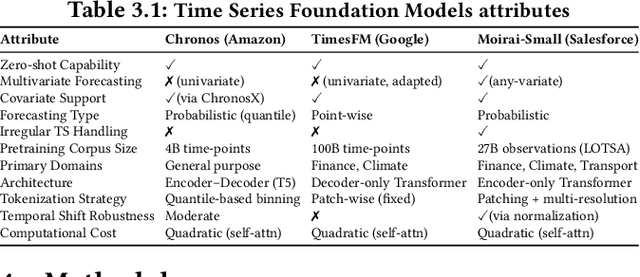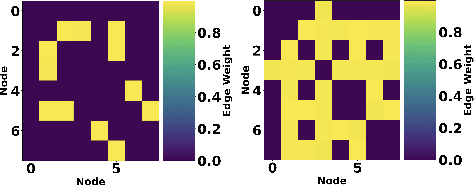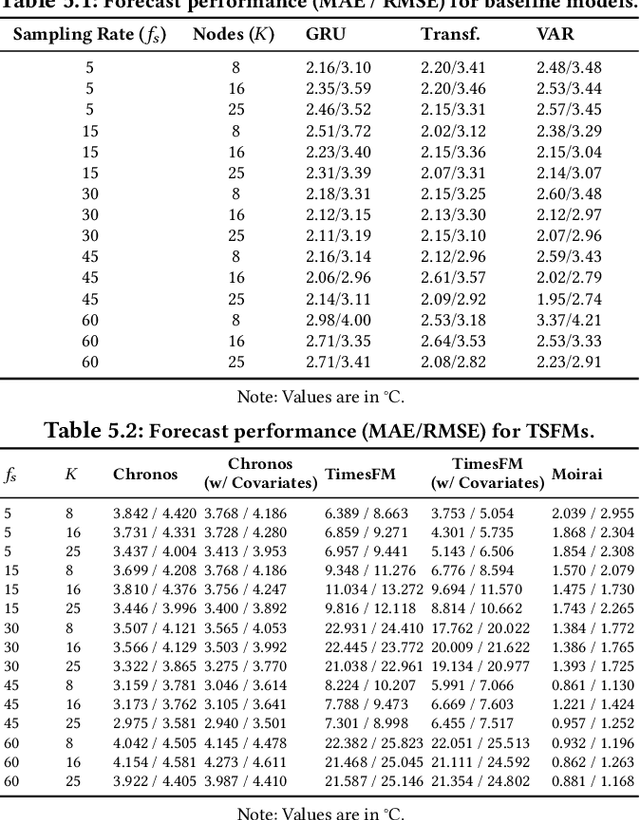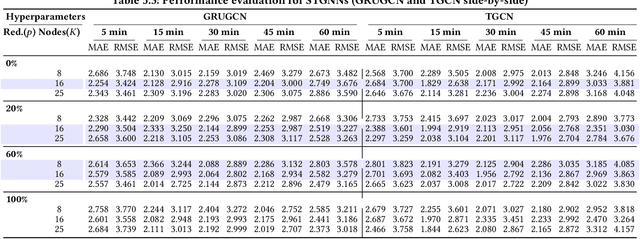Bo Chen
DJI Innovations Inc
OpenOneRec Technical Report
Dec 31, 2025Abstract:While the OneRec series has successfully unified the fragmented recommendation pipeline into an end-to-end generative framework, a significant gap remains between recommendation systems and general intelligence. Constrained by isolated data, they operate as domain specialists-proficient in pattern matching but lacking world knowledge, reasoning capabilities, and instruction following. This limitation is further compounded by the lack of a holistic benchmark to evaluate such integrated capabilities. To address this, our contributions are: 1) RecIF Bench & Open Data: We propose RecIF-Bench, a holistic benchmark covering 8 diverse tasks that thoroughly evaluate capabilities from fundamental prediction to complex reasoning. Concurrently, we release a massive training dataset comprising 96 million interactions from 160,000 users to facilitate reproducible research. 2) Framework & Scaling: To ensure full reproducibility, we open-source our comprehensive training pipeline, encompassing data processing, co-pretraining, and post-training. Leveraging this framework, we demonstrate that recommendation capabilities can scale predictably while mitigating catastrophic forgetting of general knowledge. 3) OneRec-Foundation: We release OneRec Foundation (1.7B and 8B), a family of models establishing new state-of-the-art (SOTA) results across all tasks in RecIF-Bench. Furthermore, when transferred to the Amazon benchmark, our models surpass the strongest baselines with an average 26.8% improvement in Recall@10 across 10 diverse datasets (Figure 1). This work marks a step towards building truly intelligent recommender systems. Nonetheless, realizing this vision presents significant technical and theoretical challenges, highlighting the need for broader research engagement in this promising direction.
Route Experts by Sequence, not by Token
Nov 09, 2025Abstract:Mixture-of-Experts (MoE) architectures scale large language models (LLMs) by activating only a subset of experts per token, but the standard TopK routing assigns the same fixed number of experts to all tokens, ignoring their varying complexity. Prior adaptive routing methods introduce additional modules and hyperparameters, often requiring costly retraining from scratch. We propose Sequence-level TopK (SeqTopK), a minimal modification that shifts the expert budget from the token level to the sequence level. By selecting the top $T \cdot K$ experts across all $T$ tokens, SeqTopK enables end-to-end learned dynamic allocation -- assigning more experts to difficult tokens and fewer to easy ones -- while preserving the same overall budget. SeqTopK requires only a few lines of code, adds less than 1% overhead, and remains fully compatible with pretrained MoE models. Experiments across math, coding, law, and writing show consistent improvements over TopK and prior parameter-free adaptive methods, with gains that become substantially larger under higher sparsity (up to 16.9%). These results highlight SeqTopK as a simple, efficient, and scalable routing strategy, particularly well-suited for the extreme sparsity regimes of next-generation LLMs. Code is available at https://github.com/Y-Research-SBU/SeqTopK.
No One-Model-Fits-All: Uncovering Spatio-Temporal Forecasting Trade-offs with Graph Neural Networks and Foundation Models
Nov 07, 2025



Abstract:Modern IoT deployments for environmental sensing produce high volume spatiotemporal data to support downstream tasks such as forecasting, typically powered by machine learning models. While existing filtering and strategic deployment techniques optimize collected data volume at the edge, they overlook how variations in sampling frequencies and spatial coverage affect downstream model performance. In many forecasting models, incorporating data from additional sensors denoise predictions by providing broader spatial contexts. This interplay between sampling frequency, spatial coverage and different forecasting model architectures remain underexplored. This work presents a systematic study of forecasting models - classical models (VAR), neural networks (GRU, Transformer), spatio-temporal graph neural networks (STGNNs), and time series foundation models (TSFMs: Chronos Moirai, TimesFM) under varying spatial sensor nodes density and sampling intervals using real-world temperature data in a wireless sensor network. Our results show that STGNNs are effective when sensor deployments are sparse and sampling rate is moderate, leveraging spatial correlations via encoded graph structure to compensate for limited coverage. In contrast, TSFMs perform competitively at high frequencies but degrade when spatial coverage from neighboring sensors is reduced. Crucially, the multivariate TSFM Moirai outperforms all models by natively learning cross-sensor dependencies. These findings offer actionable insights for building efficient forecasting pipelines in spatio-temporal systems. All code for model configurations, training, dataset, and logs are open-sourced for reproducibility: https://github.com/UIUC-MONET-Projects/Benchmarking-Spatiotemporal-Forecast-Models
NegoCollab: A Common Representation Negotiation Approach for Heterogeneous Collaborative Perception
Oct 31, 2025Abstract:Collaborative perception improves task performance by expanding the perception range through information sharing among agents. . Immutable heterogeneity poses a significant challenge in collaborative perception, as participating agents may employ different and fixed perception models. This leads to domain gaps in the intermediate features shared among agents, consequently degrading collaborative performance. Aligning the features of all agents to a common representation can eliminate domain gaps with low training cost. However, in existing methods, the common representation is designated as the representation of a specific agent, making it difficult for agents with significant domain discrepancies from this specific agent to achieve proper alignment. This paper proposes NegoCollab, a heterogeneous collaboration method based on the negotiated common representation. It introduces a negotiator during training to derive the common representation from the local representations of each modality's agent, effectively reducing the inherent domain gap with the various local representations. In NegoCollab, the mutual transformation of features between the local representation space and the common representation space is achieved by a pair of sender and receiver. To better align local representations to the common representation containing multimodal information, we introduce structural alignment loss and pragmatic alignment loss in addition to the distribution alignment loss to supervise the training. This enables the knowledge in the common representation to be fully distilled into the sender.
ChemDFM-R: An Chemical Reasoner LLM Enhanced with Atomized Chemical Knowledge
Jul 30, 2025Abstract:While large language models (LLMs) have achieved impressive progress, their application in scientific domains such as chemistry remains hindered by shallow domain understanding and limited reasoning capabilities. In this work, we focus on the specific field of chemistry and develop a Chemical Reasoner LLM, ChemDFM-R. We first construct a comprehensive dataset of atomized knowledge points to enhance the model's understanding of the fundamental principles and logical structure of chemistry. Then, we propose a mix-sourced distillation strategy that integrates expert-curated knowledge with general-domain reasoning skills, followed by domain-specific reinforcement learning to enhance chemical reasoning. Experiments on diverse chemical benchmarks demonstrate that ChemDFM-R achieves cutting-edge performance while providing interpretable, rationale-driven outputs. Further case studies illustrate how explicit reasoning chains significantly improve the reliability, transparency, and practical utility of the model in real-world human-AI collaboration scenarios.
Reasoning-Driven Retrosynthesis Prediction with Large Language Models via Reinforcement Learning
Jul 23, 2025Abstract:Retrosynthesis planning, essential in organic synthesis and drug discovery, has greatly benefited from recent AI-driven advancements. Nevertheless, existing methods frequently face limitations in both applicability and explainability. Traditional graph-based and sequence-to-sequence models often lack generalized chemical knowledge, leading to predictions that are neither consistently accurate nor easily explainable. To address these challenges, we introduce RetroDFM-R, a reasoning-based large language model (LLM) designed specifically for chemical retrosynthesis. Leveraging large-scale reinforcement learning guided by chemically verifiable rewards, RetroDFM-R significantly enhances prediction accuracy and explainability. Comprehensive evaluations demonstrate that RetroDFM-R significantly outperforms state-of-the-art methods, achieving a top-1 accuracy of 65.0% on the USPTO-50K benchmark. Double-blind human assessments further validate the chemical plausibility and practical utility of RetroDFM-R's predictions. RetroDFM-R also accurately predicts multistep retrosynthetic routes reported in the literature for both real-world drug molecules and perovskite materials. Crucially, the model's explicit reasoning process provides human-interpretable insights, thereby enhancing trust and practical value in real-world retrosynthesis applications.
FastRef:Fast Prototype Refinement for Few-Shot Industrial Anomaly Detection
Jun 26, 2025Abstract:Few-shot industrial anomaly detection (FS-IAD) presents a critical challenge for practical automated inspection systems operating in data-scarce environments. While existing approaches predominantly focus on deriving prototypes from limited normal samples, they typically neglect to systematically incorporate query image statistics to enhance prototype representativeness. To address this issue, we propose FastRef, a novel and efficient prototype refinement framework for FS-IAD. Our method operates through an iterative two-stage process: (1) characteristic transfer from query features to prototypes via an optimizable transformation matrix, and (2) anomaly suppression through prototype alignment. The characteristic transfer is achieved through linear reconstruction of query features from prototypes, while the anomaly suppression addresses a key observation in FS-IAD that unlike conventional IAD with abundant normal prototypes, the limited-sample setting makes anomaly reconstruction more probable. Therefore, we employ optimal transport (OT) for non-Gaussian sampled features to measure and minimize the gap between prototypes and their refined counterparts for anomaly suppression. For comprehensive evaluation, we integrate FastRef with three competitive prototype-based FS-IAD methods: PatchCore, FastRecon, WinCLIP, and AnomalyDINO. Extensive experiments across four benchmark datasets of MVTec, ViSA, MPDD and RealIAD demonstrate both the effectiveness and computational efficiency of our approach under 1/2/4-shots.
Vela: Scalable Embeddings with Voice Large Language Models for Multimodal Retrieval
Jun 17, 2025Abstract:Multimodal large language models (MLLMs) have seen substantial progress in recent years. However, their ability to represent multimodal information in the acoustic domain remains underexplored. In this work, we introduce Vela, a novel framework designed to adapt MLLMs for the generation of universal multimodal embeddings. By leveraging MLLMs with specially crafted prompts and selected in-context learning examples, Vela effectively bridges the modality gap across various modalities. We then propose a single-modality training approach, where the model is trained exclusively on text pairs. Our experiments show that Vela outperforms traditional CLAP models in standard text-audio retrieval tasks. Furthermore, we introduce new benchmarks that expose CLAP models' limitations in handling long texts and complex retrieval tasks. In contrast, Vela, by harnessing the capabilities of MLLMs, demonstrates robust performance in these scenarios. Our code will soon be available.
Generative Representational Learning of Foundation Models for Recommendation
Jun 16, 2025Abstract:Developing a single foundation model with the capability to excel across diverse tasks has been a long-standing objective in the field of artificial intelligence. As the wave of general-purpose foundation models sweeps across various domains, their influence has significantly extended to the field of recommendation systems. While recent efforts have explored recommendation foundation models for various generative tasks, they often overlook crucial embedding tasks and struggle with the complexities of multi-task learning, including knowledge sharing & conflict resolution, and convergence speed inconsistencies. To address these limitations, we introduce RecFound, a generative representational learning framework for recommendation foundation models. We construct the first comprehensive dataset for recommendation foundation models covering both generative and embedding tasks across diverse scenarios. Based on this dataset, we propose a novel multi-task training scheme featuring a Task-wise Mixture of Low-rank Experts (TMoLE) to handle knowledge sharing & conflict, a Step-wise Convergence-oriented Sample Scheduler (S2Sched) to address inconsistent convergence, and a Model Merge module to balance the performance across tasks. Experiments demonstrate that RecFound achieves state-of-the-art performance across various recommendation tasks, outperforming existing baselines.
Enhancing Uncertainty Estimation and Interpretability via Bayesian Non-negative Decision Layer
May 28, 2025



Abstract:Although deep neural networks have demonstrated significant success due to their powerful expressiveness, most models struggle to meet practical requirements for uncertainty estimation. Concurrently, the entangled nature of deep neural networks leads to a multifaceted problem, where various localized explanation techniques reveal that multiple unrelated features influence the decisions, thereby undermining interpretability. To address these challenges, we develop a Bayesian Non-negative Decision Layer (BNDL), which reformulates deep neural networks as a conditional Bayesian non-negative factor analysis. By leveraging stochastic latent variables, the BNDL can model complex dependencies and provide robust uncertainty estimation. Moreover, the sparsity and non-negativity of the latent variables encourage the model to learn disentangled representations and decision layers, thereby improving interpretability. We also offer theoretical guarantees that BNDL can achieve effective disentangled learning. In addition, we developed a corresponding variational inference method utilizing a Weibull variational inference network to approximate the posterior distribution of the latent variables. Our experimental results demonstrate that with enhanced disentanglement capabilities, BNDL not only improves the model's accuracy but also provides reliable uncertainty estimation and improved interpretability.
 Add to Chrome
Add to Chrome Add to Firefox
Add to Firefox Add to Edge
Add to Edge